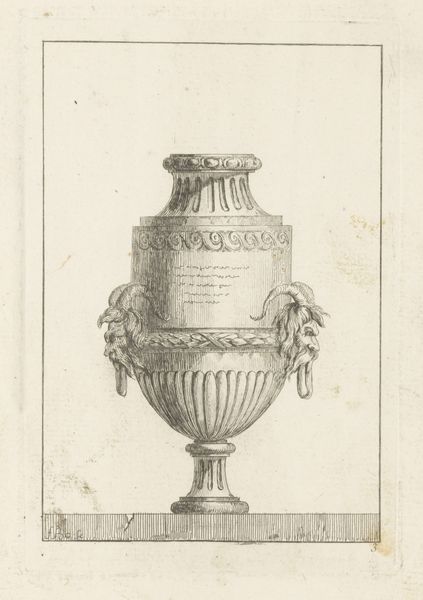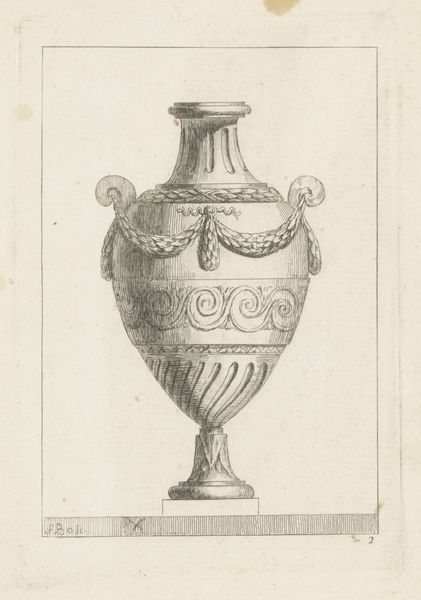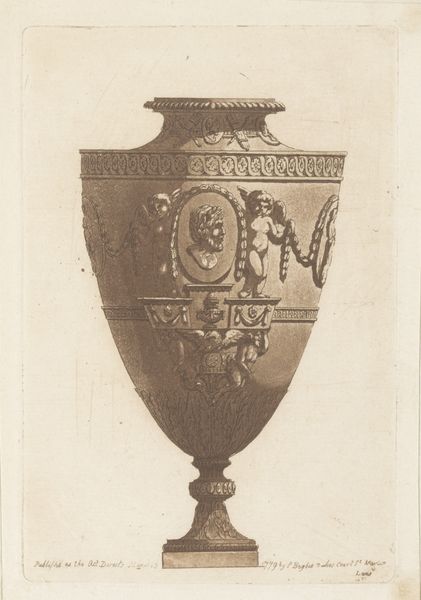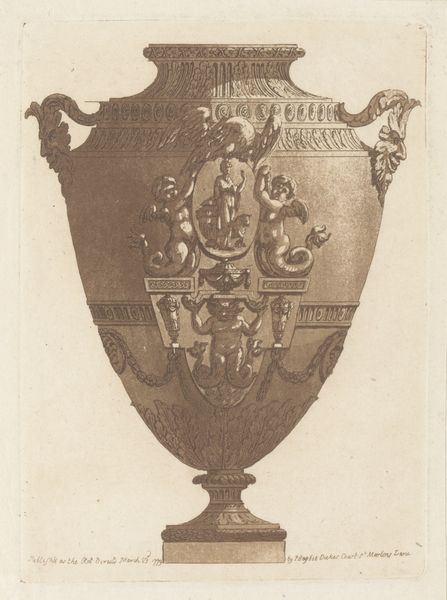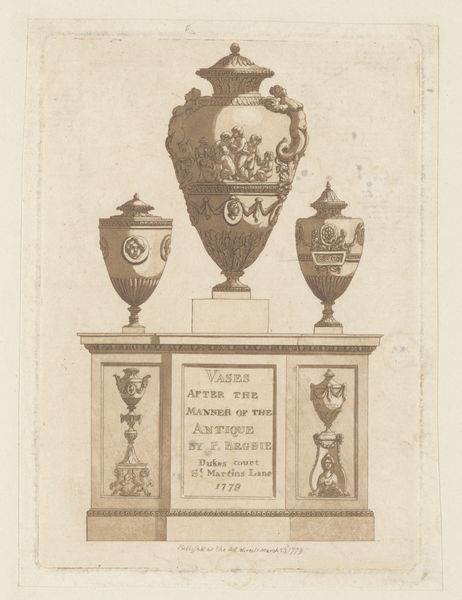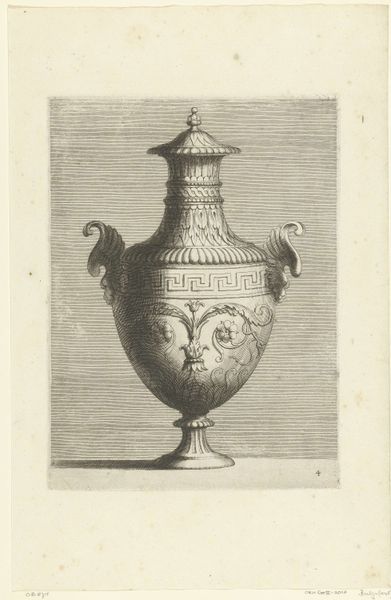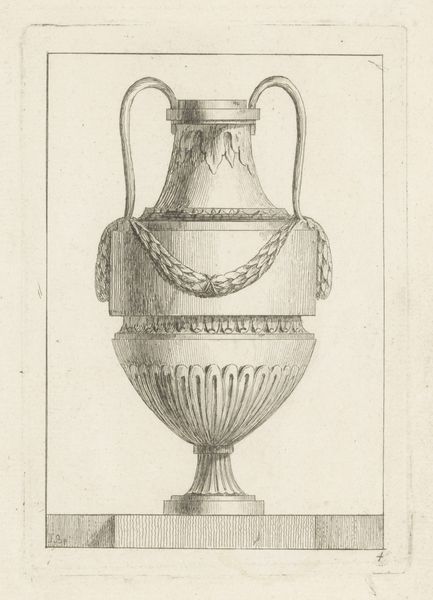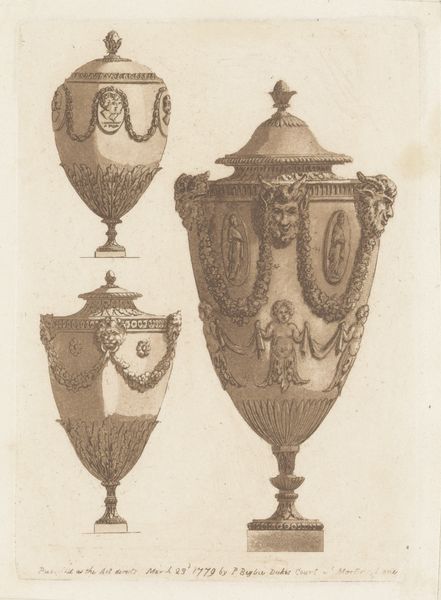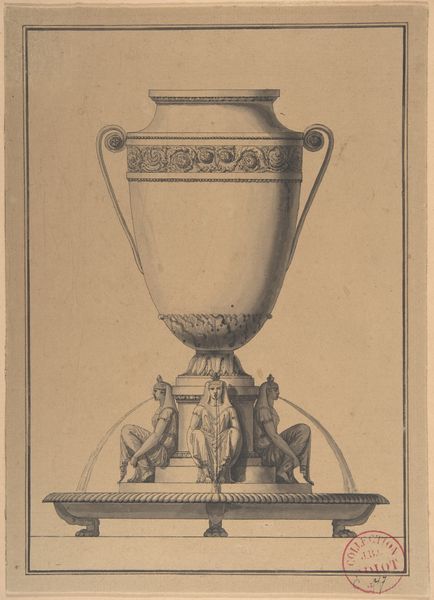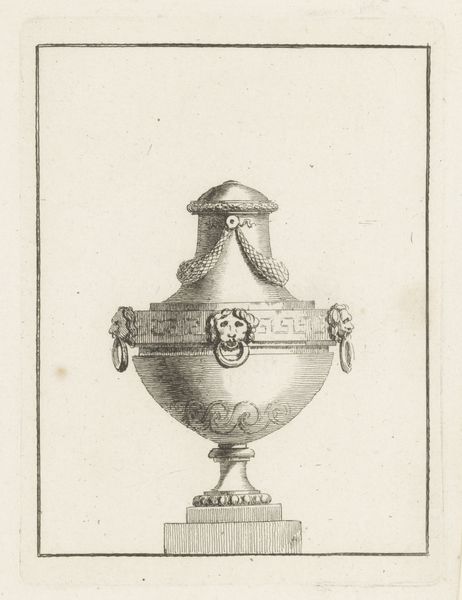
drawing, print, engraving
#
portrait
#
drawing
#
neoclacissism
# print
#
figuration
#
form
#
line
#
engraving
Dimensions: height 154 mm, width 102 mm
Copyright: Rijks Museum: Open Domain
This print of an antique vase with tritons was made by Patrick Begbie, likely in the late 1700s or early 1800s. The printmaking process itself – probably etching or engraving – is crucial to understanding the work. Notice the precision of the lines, their controlled variation creating depth and shadow. This was achieved by carefully incising a metal plate, inking it, and then pressing it onto paper. While seemingly simple, it required tremendous skill and time. Printmaking, like many other crafts, was often associated with workshops and collaborative labor. The inscription gives us some sense of this: ‘Dukes court S’ Marina La’. This was likely the address of the workshop in which Begbie worked. And it’s key to remember that prints like these, which were often published in books or sold individually, made classical designs accessible to a wider audience. What might have otherwise been a privilege for the wealthy, such as collecting antique vases, was made available to others through the print medium. So, the value of this work is not simply in its aesthetic qualities, but in its engagement with historical and social contexts, bridging the gap between elite and popular consumption.
Comments
No comments
Be the first to comment and join the conversation on the ultimate creative platform.
